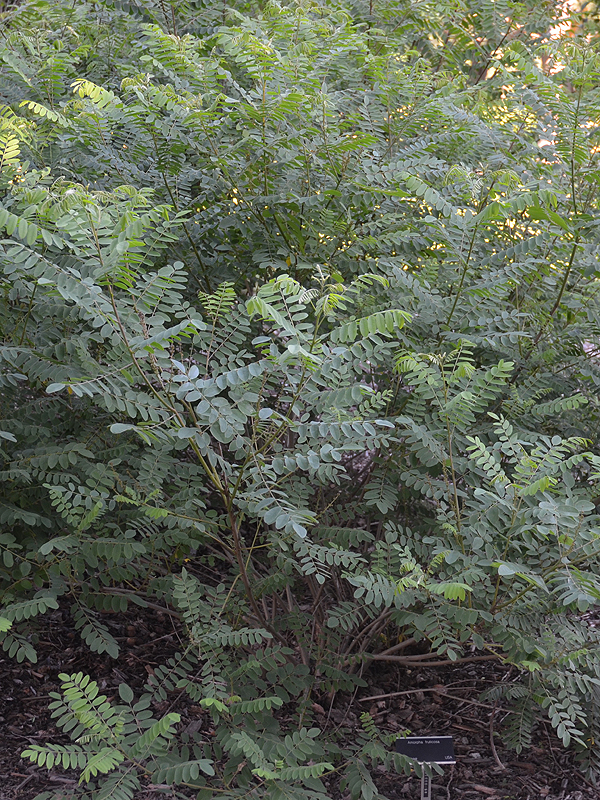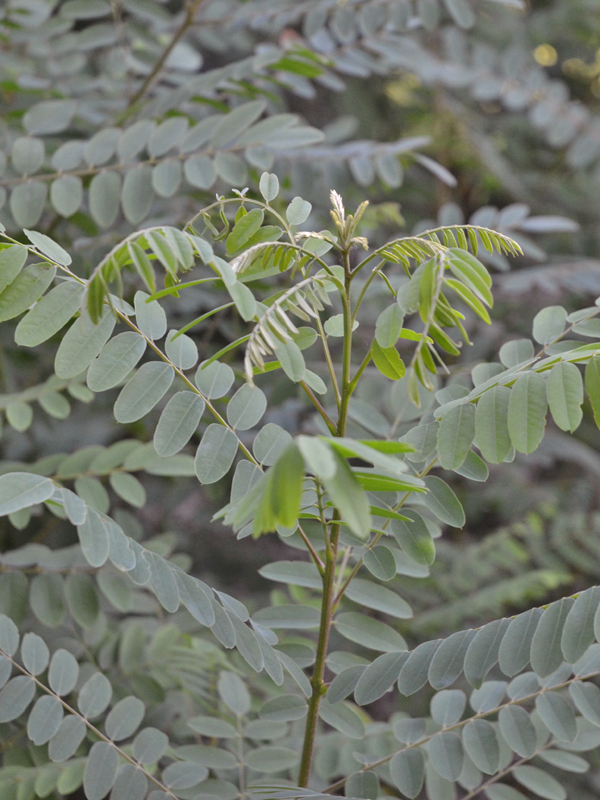
Woody > Amorpha > Amorpha fruticosa > Amorpha fruticosa
Amorpha fruticosa
Indigo Bush, False Indigo, Desert Indigo, Leadplant, Bastard Indigo, River Locust, False Indigo Bush, Desrt False Indigo
Origin: Native to the United States of America predominantly in the central regions of the country but can be found as far South as California. Native in Manitoba, Canada but has been introduced into Ontario and Quebec.
| Family |
| Fabaceae |
| Genus |
| Amorpha |
| Species |
| fruticosa |
| Category |
| Woody |
| Type |
| Shrub (deciduous) |
| Synonyms |
| Amorpha croceolanata |
| USDA Hardiness Zone |
| 4 - 9 |
| Canadian Hardiness Zone |
| 3a - 4a |
| RHS Hardiness Zone |
| H7 |
| Temperature (°C) |
| -20 |
| Temperature (°F) |
| -4 |
| Height |
| 1 - 4 m |
| Spread |
| 2 - 5 m |
Photographs
Description and Growing Information
Flowering Period
| Landscape |
| This plant can be used as an ornamental plant and as a windbreak. |
| Cultivation |
| Highly adaptable to soil pH and does well in poor, dry, sandy soils and full sun. |
| Shape |
| An arching shape. |
| Growth |
| Fast |
| Pests |
| Rust fungi (Uropyxis amorphae), leaf spots, powdery mildew and twig canker. |
| Habitat |
| Wetlands and along river banks. |
| Bark/Stem Description |
| Scattered small lenticels. |
| Flower/Leaf Bud Description |
| Imbricate, often superposed, essentially glabrous and appressed. |
| Leaf Description |
| Alternate, pinnately compound leaves with a varying amount of leaflets of 13 - 33, can be oval or elliptic with a size of 1.2 - 3.8 cm long and 0.6 - 1.2 cm wide. Mucronate at apex, rounded at ends, finely pubescent and glabrate; short thread-like stipule at the base of each leaflet. |
| Flower Description |
| Consists of one petal and is 0.8 cm long on 7.5 - 15 cm upright spikes |
| Fruit Description |
| Small 0.8 cm long kidney-shaped pod covered in stipules. |
| Colour Description |
| Leaves green in summer turning to yellow in autumn. Flowers are indigo containing orange anthers. An early hard freeze will turn foliage brown. The stems are green when young and turn to a brownish-grey with maturity. |
| Texture Description |
| Bark is smooth. |
| Notable Specimens |
| The University of Alberta Botanic Garden, Edmonton, Alberta, Canada. |
| Propagation |
| Scarification must occur. This can be done with sulfuric acid for 5 - 8 minutes or with tumble scarification for 2 - 3 hours. Also a hot water treatment with 5 - 10 grams of seed in 100 ml of 90°C water and let stand for 1 hour. Cutting from softwood stems can also be rooted, take cutting June/July and plant in peat moss, perlite growing media and keep moist, this method has a success rate of roughly 90%. |
| Ethnobotanical Uses (Disclaimer) |
| Resin used as an insect repellant. |
References
Dirr, M. (2009). Manual of Woody Landscape Plants Their Identification, Ornamental Characteristics, Culture, Propagation and Uses. Champaign, Illinois: Stipes Publishing L.L.C.
USDA NRCS National Plant Data Center. (2006) Plant Guide for Desert False Indigo Amorpha fruitcosa L. Washington D.C.: USDA

